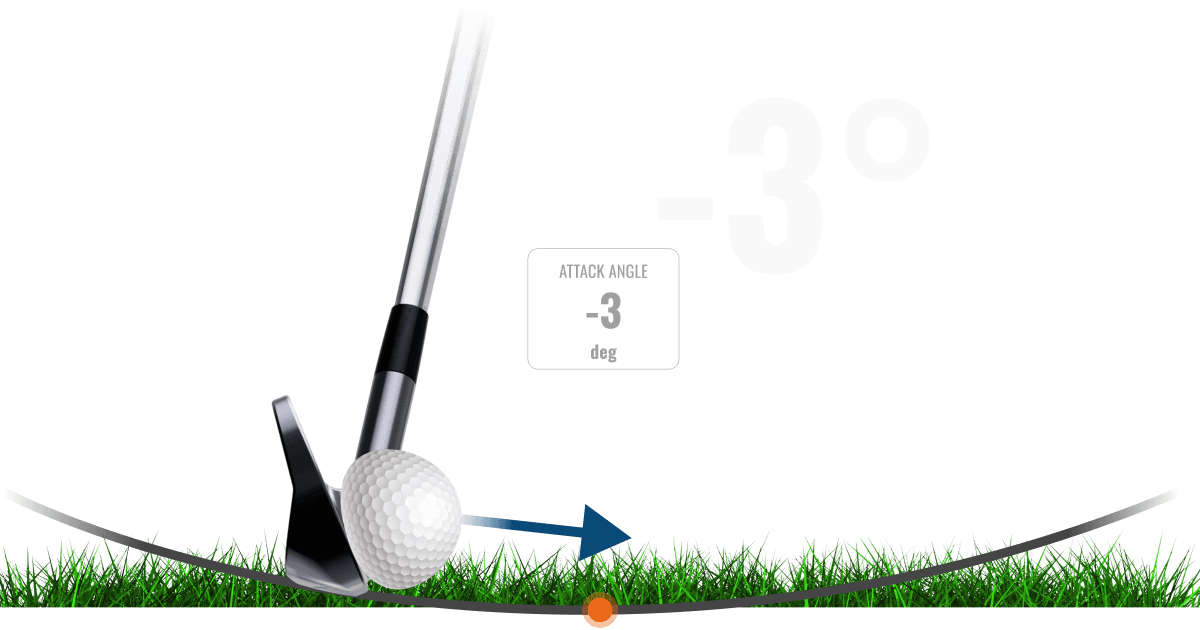What is Attack Angle?


Measured relative to the horizon, Attack Angle is the up or down movement of the club head at the time of maximum compression.
Golf shots hit off the ground (not off tees) should have a negative Attack Angle to optimize trajectory.
However, golfers with slower club speeds should be careful not to hit too much down (negative Attack Angle) with their irons. This will affect the golfer’s potential distance as well as their ability to control the ball on approach shots.
To maximize distance with your driver, hitting up on the ball (positive Attack Angle) is a must. The driver’s loft should be chosen so that it complements the golfer’s Attack Angle and club speed. Having a positive Attack Angle does not guarantee maximum distance. The fit of the club is also an essential piece of the puzzle.
Check out this video where Martin Chuck of Revolution Golf explains how important Attack Angle is when optimizing distance.
Technical Definition:
Attack Angle – The vertical direction of the club head’s geometric center movement at maximum compression of the golf ball
Tour Averages
PGA TOUR
Driver = -0.9 degrees
6 iron = -3.7 degrees
LPGA Tour
Driver = +2.8 degrees
6 iron = -2.3 degrees
For a full list of Tour averages, visit Trackman PGA and LPGA Tour Averages
Trackman Combine Averages
Male Amateur (Driver)
Scratch of Better = -0.9 degrees
5 HCP = -1.1 degrees
10 HCP = -1.2 degrees
Average Golfer (14.5) = -1.8 degrees
Bogey Golfer = -2.1 degrees
Female Amateur (Driver)
Scratch or Better = -0.9 degrees
5 HCP = -1.8 degrees
10 HCP = -1.7 degrees
15 HCP = -2.3 degrees
The standard assumption for Attack Angle is 0 degrees for the driver; whereas, the standard assumption for 6-iron and PW is determined based on the Trackman Optimizer. The optimizer looks at club speed and trajectory type to determine the optimal Attack Angle. If trajectory type is not stated, then mid-trajectory is assumed. A mid-trajectory along with the standard assumption for club speed is used to determine the Attack Angle for each club type. That results in the following values.
6-iron = -3.2 degrees
Pitching Wedge = -3.9 degrees
What our Trackman Masters say about Attack Angle…
“A golfer’s Attack Angle has become one of the first things that I look at when fitting my students into a driver. Helping golfers to understand how their Attack Angle plays an integral role in optimizing their spin loft, ball speed, and total distance has produced results that some students had never thought possible. If you do not know a golfer’s Attack Angle, then it becomes very difficult to fit them correctly.”

Joel Mercieca
KDV Sports, Australia
“Attack Angle is the king of the parameters in my opinion. It plays a significant role in determining the club path and the quality of the strike. I have often said that if a golfer can learn to manage the Attack Angle, then they can manage their ball flight.”

Andrew Rice
Berkeley Hall Golf Club, SC, US
“I look at Attack Angle as where the golfer is hitting the ball in relation to the arc of the swing. Ball position, movement of the swing center, and the position of the hands (and the shaft) at impact are all things you must consider when looking at Attack Angle. It is extremely important to look at Attack Angle when you are looking at club path. Adjusting swing direction while maintaining a proper Attack Angle is how I like to achieve the desired club path.”

Mark Anderson
Philadelphia Cricket Club, PA, US